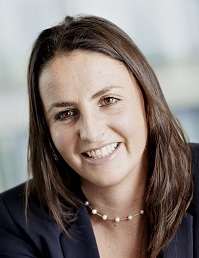 What is the main HR technology project you have been involved in?
What is the main HR technology project you have been involved in?
I oversaw the implementation of an HR system from SumTotal Systems which included five solutions: learning, performance, compensation, workforce analytics and SumTotal’s elixHR platform, which links all our different HR solutions and pieces of software.
Misys already used SAP HR to provide core HR transactions, but we wanted to better understand the whole workforce and link disparate data across HR and the wider business. However we didn’t want to go through an upgrade or replace the whole system as it would have proved too expensive and time consuming.
Can you talk me through the implementation process?
The solution needed to work with our existing technology as we’d already made that investment. We needed a new system quickly and to deliver the project, we worked with both SumTotal and a partner, Veran Performance. Veran demonstrated the tangible business benefits before we signed the deal, and then worked with us throughout the deployment phase. We built the platform in five months for almost 4,500 users in over 50 countries so it was a quick, large-scale implementation.
What techniques did you use to encourage employees to use it?
Throughout the implementation, our leadership team was very hands on and proactive to ensure the technology was more than just a tool. They also helped by flagging the new technology to all our employees which ensured that everyone uses it. I think it’s key to a successful implementation to have leadership buy-in and understanding.
In addition to that, our staff wanted to see how their work was impacting the overall business and they were frustrated at not being able to track this before. The SumTotal solution allowed us to personalise employee pages and we created MiCareer to meet this need. By showing how much the new system could monitor and track goals, as well as how to personalise it, employees were more willing to use it. The vast majority employees are logged onto the talent system and we see consistent engagement because of the individual nature of the solution.
What were the pitfalls or challenges of both adoption and implementation and how did you overcome them?
One of our key challenges was that we needed a system that would work with Misys’ existing SAP technology, and we also needed it to be up and running quickly. I’ve seen some technology implementations last 18 months, but we needed this completed in under six.
We had reassurance from both SumTotal and partner company Veran on exactly how the implementation would happen so quickly so we were confident in it from the outset.
To what extent did this project help to re-engage employees? What has the feedback been like?
A survey conducted on MiCareer showed that employees have a full understanding of how their individual work contributes to Misys’ overall business objectives. This level of visibility was a key objective of implementing the new technology. Our employees agree that MiCareer helps them to plan and build solid career paths.
Is there anything you would have done differently?
When we first started looking, we thought we had to implement a new system, when it wasn’t really what we wanted. By being very specific about our needs in terms of outcomes, usability and timescales, we got the right solution. I would recommend that anyone who wants to implement new technology finalises the overall business goals right from the start.
Additionally, if we completed the project again, we would look at different learning styles across different countries we work in.
What do you see as being the key technology trends in the HR space for 2014?
Driving business efficiency will be key in 2014 as will making sure the right people with the right skills are in the right roles. Being able to assign metrics to prove employees efficiency is very important to organisations and those who have this capability will be able to increase their spend in HR as the organisation sees a greater ROI.
In the past HR was trying to keep up and brought in the necessary talent when it was needed. A shift is now happening towards retaining talent to counter the high costs of bringing in new employees to fill a role. The money saved on this can be invested back into the business, training and developing employees to transform the business.





